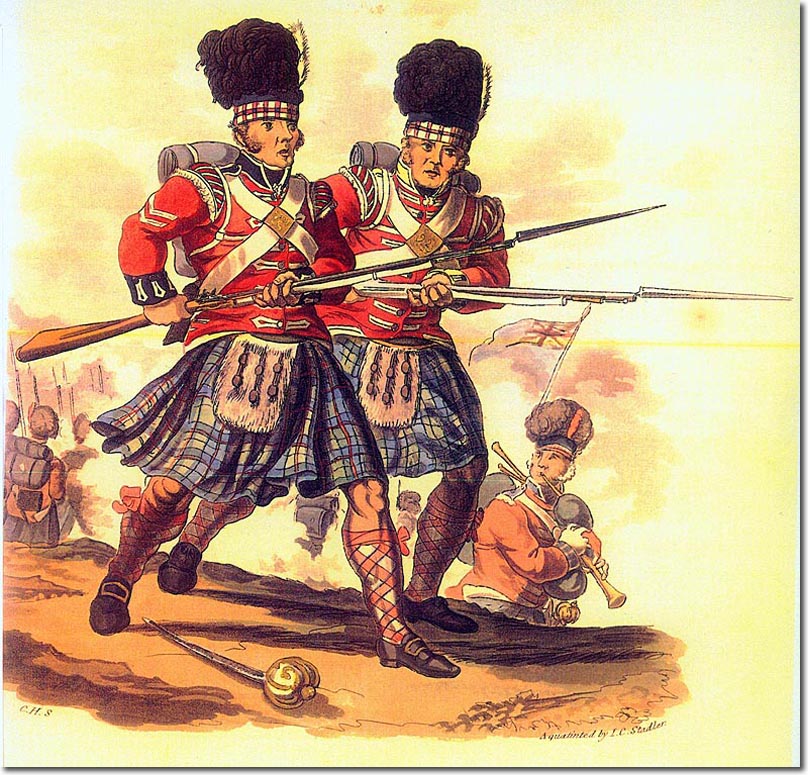|
|


|
|
Charles Hamilton Smith was a military artist who produced a series of 60 prints between 1812 and 1815. This was the 18th print, published on 1 Sep 1812, titled Grenadiers of the XLIId or Royal and XCIId or Gordon Highlanders. The 42nd Highlander is nearest to us and has blue facings with white lace button loops in bastion shapes. His shoulder wings denote his status as a flank company man, specifically the grenadier company. His feather bonnet is more 'modern' at this stage but it has a white plume instead of a red hackle as would be expected. Grenadiers normally wore white plumes but the Black Watch jealously held on to their privilege of the all red hackle where other regiments had white over red. The background figures are shown with the red plume. One source says that the 42nd grenadier company had red plumes with a white tip while another says that they wore a white plume with a red tip. And similarly red and green for the light company. In this period the men were provided with a peak which could be attached to the front of the bonnet. The corporal has two white chevrons on his sleeve. The display of rank in this way was instituted in 1803. Sergeant-majors had four stripes, sergeants three and corporals two. There was no lance-corporal rank at this stage.
The kilt he wears is the philabeg, small kilt, as opposed to the belted plaid. Sporans were not worn on campaign. The tartan in this print has a red line, which some sources claim to have been the privilege of the grenadier company only while others say that the Black Watch tartan for all ranks was this pattern in this period. The print shows the grenadier of the 92nd Regiment alongside the 42nd. It was common practice for the grenadier companies of brigaded regiments to be put together for an assault. They were the elite, made up of brave men who were keen to be the first into action. There is a sword lying on the ground and it appears that neither of these men is carrying a sword, relying instead on the bayonet. Perhaps it was the artist's way of pointing out a new development, that the distinction of the Highlander rank and file carrying broadswords had been stopped. |
Armed Forces | Art and Culture | Articles | Biographies | Colonies | Discussion | Glossary | Home | Library | Links | Map Room | Sources and Media | Science and Technology | Search | Student Zone | Timelines | TV & Film | Wargames